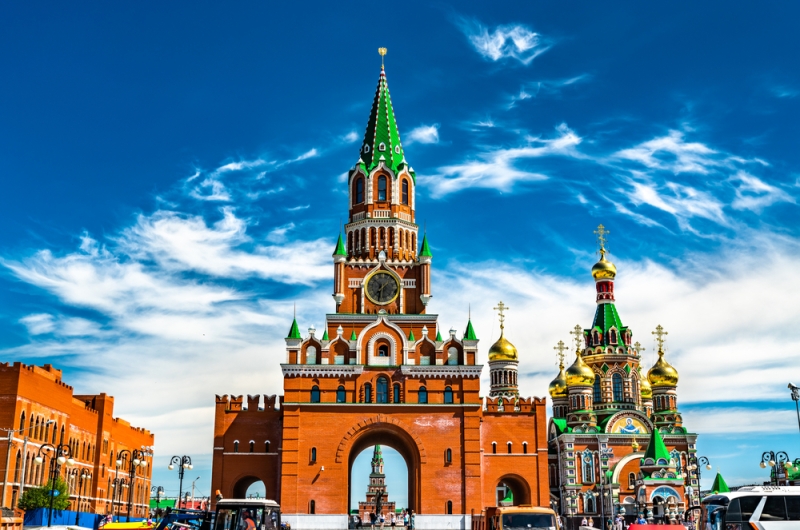
The Republic of Mari El, lost in central Russia among dense pine forests, is not yet the most obvious destination for domestic tourism, unlike neighboring Tatarstan. But still, a trip there will definitely be unforgettable, because Mari El is a place with a special flavor. We’ll tell you in detail why it’s worth coming there.
How to get there
Planes fly to Yoshkar-Ola from Moscow (1 hour 30 minutes, one-way ticket from 4,000 rubles*) and St. Petersburg (2 hours, one-way ticket from 4,500 rubles*).
The train from Moscow runs every day. The journey takes 14 hours 30 minutes, for a ticket you will have to pay from 2,500 rubles*.
You can get there from the capital by bus in 12 hours, paying from 1,500 rubles*.
Where to stay
There are about 100 accommodation options available in the capital of the republic. A night in a hostel will cost from 300 rubles, and for 1,000 rubles you can spend the night in a 3* hotel. 4-5* hotels offer rooms from 4,000 to 8,500 rubles per night.
See the “fairytale city”
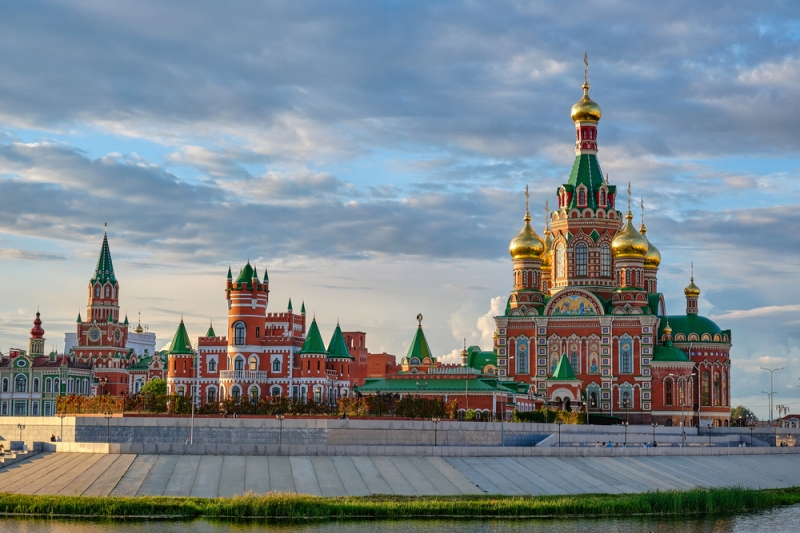
Just a decade ago, the capital of the republic, Yoshkar-Ola, was an unremarkable county town that travelers rarely indulged in their attention. Everything changed in the late 2000s, when a plan for the reconstruction and development of the city was approved and implemented, turning it into a “fairy tale”.
Today Yoshkar-Ola seems to be striving to become a leader in import substitution: many parts of the city imitate other countries and cities. The Republic Square is reminiscent of Moscow, the Bruges Embankment is reminiscent of Belgium, the National Art Gallery is built in the style of a Florentine palazzo, and the building of the Ordinary Miracle school is called Hogwarts by the locals themselves. Walking through the colorful new building is also interesting because it hides many monuments, sometimes completely unexpected: for example, a copy of the Tsar Cannon, a monument to Grace Kelly and Prince Rainier III of Monaco, a monument to Rembrandt, a monument to Lorenzo di Medici or a sculpture by Louis Moreau. Locals and tourists especially love the “donkey clock” with moving figures on the art gallery building.
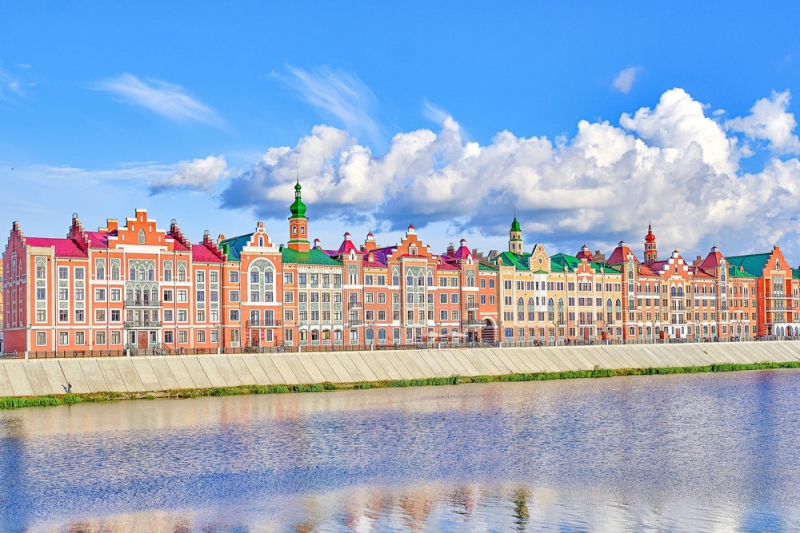
Among the historical sites in Yoshkar-Ola, several pre-revolutionary residential buildings have been preserved (the house of the merchant Naumov, the Chulkov estate, the house of Pchelintsev, the house of the timber merchant Bulygin), buildings from the Soviet neoclassical era, the elaborate Church of the Holy Trinity, built in the 1990s. All together, the buildings of the Mari capital form a strange eclectic ensemble, but this is precisely what attracts tourists to the city (today, for example, Yoshkar-Ola can be visited as part of a one-day tour from the capitals of neighboring republics – Kazan or Cheboksary).
Among the interesting museums of the city, it is worth noting the National Art Gallery, the exhibition of which tells about the cultural heritage of Mari El, the Republican Museum of Fine Arts, where etchings of Makovsky, Serov and Shishkin are exhibited, the National Museum of the Republic of Mari El named after T. Evseev, where household items and outfits of the ancients are stored Mari, and the heartfelt Memorial People’s Museum of the History of the Gulag.
Taste Mari dishes
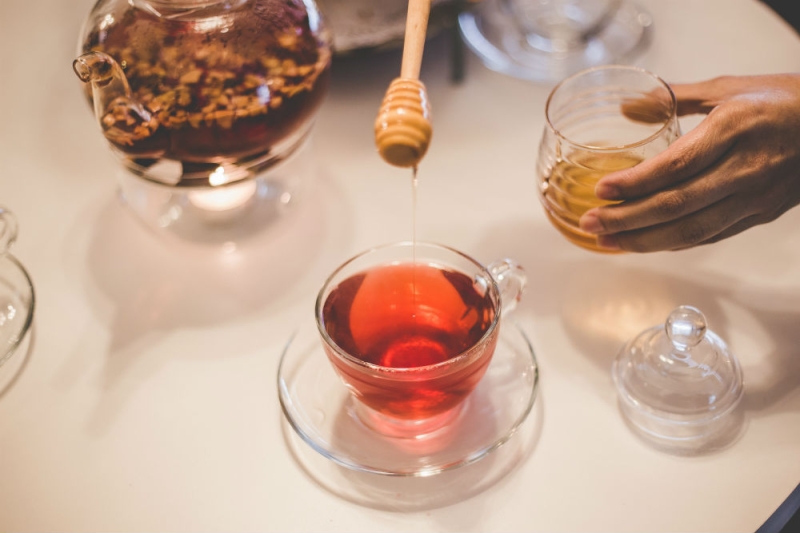
The local cuisine is quite specific – it is far from haute cuisine, since the Mari have been inhabitants of forests and villages since ancient times. That’s why the food here is hearty (sometimes even fatty) and simple. For modern travelers from big cities, accustomed to restaurant delights, it can become a whole gastronomic adventure.
The main dishes of Mari cuisine have names that are unusual for the Russian ear, but we will now try to explain everything:
- Komanmelna – puff pancakes made from different types of flour, baked in a frying pan in ovens.
- Salmaginde – flatbread baked in a frying pan.
- Parenge ergeche – flatbread with potatoes.
- Podkogylyo (podkogol) – “boiled pies”, most reminiscent our dumplings. Can be with different fillings: shyl podkogylyo – with meat, torik podkogylyo – with cottage cheese, tuvyrtysh podkogylyo – with cottage cheese and potatoes, kovyshtan podkogylyo – with cabbage. Some housewives cook them like regular dumplings, some bake them in the oven. They should be eaten by dipping them in melted butter and sour cream. By the way, you can even buy podkogylyo in Mari El in the form of a semi-finished product.
- Shylan shur kovyshta dene – cabbage soup in a loaf of rye bread.
- Rice nemyran chyve shyl – young chickens stuffed with rice porridge. & ;nbsp;
- Kozh – dried horse meat sausage.
- Sokta – boiled blood sausage with lard and cereal in lamb intestine.
- Salmamuno or pulashkamuno– scrambled eggs with milk and potatoes, baked in the oven (a relative of tortilla or frittata).
The Mari often prepare dishes from the gifts of nature – for example, they cook cabbage soup from nettles or hogweed, make kvass from lingonberries, cranberries and rowan berries, even prepare sweet soup from viburnum (polan lem). Since there is still a lot of rural land in Mari El and in any village you can easily buy a couple of liters of fresh milk “from under the cow”, there are quite a lot of dairy dishes in the national cuisine. You could even say that there is a real cult of cottage cheese here: it is added to cheesecakes, dumplings (a popular option is dumplings with cottage cheese and potatoes at the same time), they make dry cheesecakes (tuara), cottage cheese sausages (torik gych yshtyme), cabbage rolls with cottage cheese (torika cabbage rolls). Since Soviet times, a popular breakfast-dessert has settled in the local kitchen – cottage cheese balls in milk.
In hunting grounds and forests you can try elk shashlik (shordo shyl gych shashlik), stewed elk (kuktymo shordo shil) and bear meat (kuktymo mask shyl). It’s funny that today these dishes are considered expensive delicacies, although half a century ago elk and bear meat were common food for residents of forested Mari villages.
The republic has a developed private honey industry; Mari honey, especially linden honey, is valued throughout Russia. In the center of Yoshkar-Ola, at fairs you can buy honey, propolis, honeycombs, bee bread (“bee bread”). Honey is also added to many national dishes – to local mead, drink muy puro(Mari analogue of kvass), cookies muyan, pie sukyr kinde with wild berries (lingonberry, rowan, viburnum, cranberry), fried koloboks ujacha.
Traditional local drinks are beet kvass (puro), fireweed and linden blossom, as well as cold “chefir” – black tea, strongly brewed with currant leaves and oregano.
In Yoshkar-Ola you can try traditional Mari cuisine in the cafe “Sandal” (Proletarskaya str., building 46), “Giraffe” (Volkova St., building 166), tavern “Warm River” (Krasnoarmeyskaya Sloboda st., building 61), ethnocafe “Mari” (Podolsky cadets street, building 5), cafe chains “Simple food”, as well as in the city Kremlin during holidays and fairs.
View the incredible nature of the middle zone
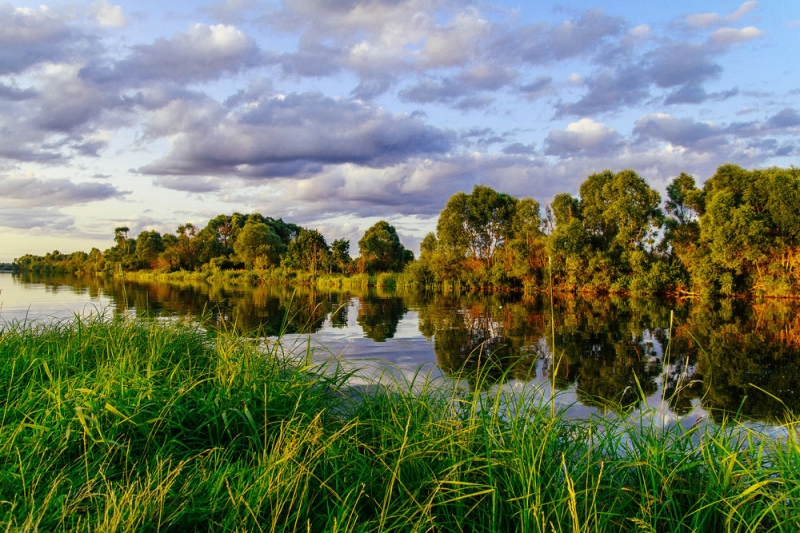
The nature of the Mari El Republic has remained almost untouched – this is largely due, of course, to the fact that the region is almost unexplored by tourists. Many forests of Maristan are protected reserves, the territory of which is generally impossible for an idle visitor to enter, and residents of forest villages have to carry special passes. However, there are also a lot of open places.
Gornoe Zadelye Nature Reserve with an area of 562 hectares is located in the east of the Kuzhenersky district of the republic along the border with the Sernursky district. This reserve was created to preserve ancient geological formations and rare Red Book plants. Zadelye’s calling card is the Nolkin Stone tract (a cave in which springs flow), as well as ancient underground quarries where millstone was mined centuries ago. Now even in summer you can see ice stalactites and stalagmites here. But it is worth remembering that passage far into the adits is prohibited due to the threat of collapses.
Getting to Gorny Zadelye by public transport is difficult: at the Yoshkar-Ola bus station you should take a bus to Sernur, from there take a bus to the village of Gornyak, and then walk to Nolkinoy Kamen. The easiest way to travel through the natural beauty is by car: along the Sernursky tract you should drive about 80 kilometers to the village of Gornyak, then walk through private houses to a clearing with a poster “Mountain Zadelye”. From there, signs painted on trees lead to the caves.
Contacts: oopt.aari.ru
Mari Chodra National Park – the most picturesque forests, rivers and lakes of the republic. It is located near the border with Tatarstan, on the territory of the Volzhsky, Zvenigovsky and Morkinsky districts, at the junction of three natural zones – southern taiga (mixed forests), coniferous-deciduous forests and forest-steppe zones. This park contains the natural mineral spring Green Key. The water in it rises from the bottom of a two-meter funnel – they say its composition is similar to the famous French mineral water Contréxeville. The spring splits into several streams, which either converge or diverge until they flow into the waters of the Ilet River. There are 14 tourist routes throughout the park – hiking, horseback and water, there are several sanatoriums, holiday homes and tent camps.
The Yoshkar-Ola railway – Yalchevsky station passes through the park. From Yoshkar-Ola by car, take the P175 Yoshkar-Ola–Kazan highway, which runs through Mari Chodra from northeast to southwest. You can get to the park through the villages of Shelanger, Krasnogorsky, Ilet or Yalchevsky. Minibuses run to many recreation centers from the capital of the republic.
Contacts: mari-chodra.rf
Bolshaya Kokshaga Nature Reserve – these are forests and valleys surrounding the main water artery of the republic, the Kokshaga River. These emerald lands are called the Forest Volga region: forests occupy 95% of the reserve (its area reaches 21,428 hectares), Moreover, there are pine, spruce, and birch groves. Walking through the forests should be done with caution: these territories are almost untouched by humans, so here you can meet moose, brown bears, foxes, wild boars and hares. It is best to stay at a camp site or rent a house in a dacha community, and explore the surrounding beauty on foot trails or with the help of a drone – from a bird’s eye view, the Bolshaya Kokshaga Nature Reserve is especially beautiful. The reserve also offers one- and two-day “educational tours”, which you can go on foot or by bicycle.
The Bolshaya Kokshaga nature reserve is located on the territory of the Kilemar and Medvedevsky districts. The nearest large settlement is the village of Starozhilsk; minibuses go to it from Yoshkar-Ola. There is a visitor center of the reserve in Starozhilsk.
Contacts: b-kokshaga.ru
Relax on beautiful lakes
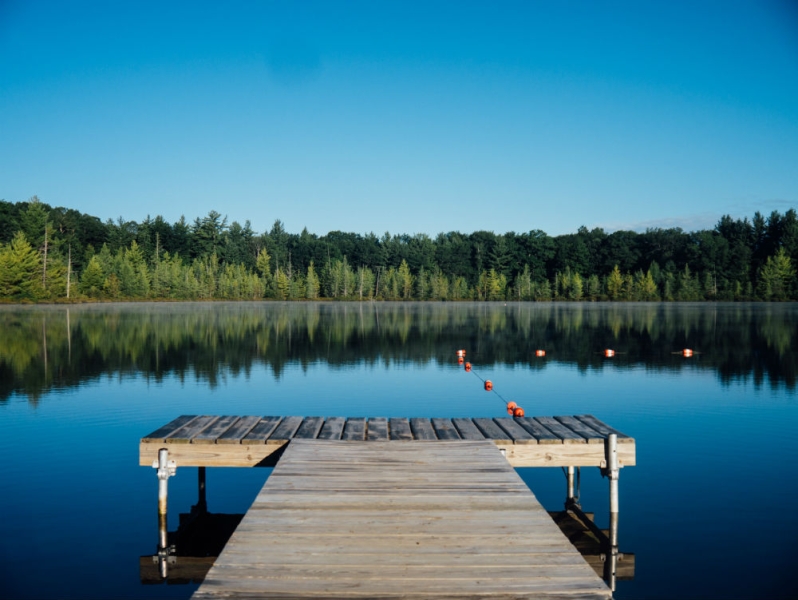
Mari El – lake region. During the summer months, many local residents leave for the lake region. In the Kokshaga River, the water is usually too cold due to the strong current, but the lakes warm up to a comfortable temperature for swimming. On the banks there are rest houses, summer cottages, tourist centers and children’s camps. By the way, many people go to the Mari lakes for successful fishing: pike, crucian carp, tench, bream, roach, perch, loach and rudd.
Lake Tair– the most famous in the republic. It is located just 42 kilometers from Yoshkar-Ola. This place is especially beautiful in autumn, when the shores and the island with a small grove in the middle of the lake are painted golden. Despite the fact that there are several camps and bases on the banks of Tahir, visiting tourists can find both a wild beach and an organized one (with gazebos, benches, a small shop and – suddenly – a hookah bar). A house on the lake shore can be rented for 900 – 3000 rubles per day. There are numerous buses from the city bus station to Tahir.
The largest Mari lake is called Yalchik. It is located on the territory of the Mari Chodra National Park, 30 kilometers from the city of Volzhsk. This lake is divided into two parts – Big Yalchik and Small Yalchik, which are connected by a canal. In summer, the canal often dries up, so there are two reservoirs. On the banks of Yalchik there are sanatoriums, holiday homes and camping parks, so you can come here for a day, a weekend, or even spend a full vacation. The lake itself is surrounded by a dense coniferous forest, where you can pick mushrooms and berries. You can get there by minibus from the bus stations of Yoshkar-Ola, Volzhsk, Zelenodolsk or Kazan.
Another remarkable lake in Mari Chodra Park – Kicier. It is known for its healing mud: thanks to it, the main health resorts of the republic were built on the banks of this particular reservoir – the Kichier and Stroitel sanatoriums and the Republican Hospital for Rehabilitation Treatment. In the silt from the bottom of Kichiera, researchers discovered a healing “bouquet” of 120 plants and minerals, which are natural phytonicides and biostimulants. They say that the air itself here is so pure that it can have a healing effect. This lake can be reached by bus from the bus station. You should get off at the “Kichier Village” stop.
And the most picturesque lake in the republic is called Sea Eye – or, in local words, Mushyl. It is located near the village of Shariboksad, Volzhsky district. This lake is attractive because it is located on the slope of a mountain, has a great depth (38.5 meters) with a modest size and a perfectly round shape. The color of the lake is also unusual – green-blue, sea green. It seems that it was formed in a volcanic crater, but in fact it is just a karst sinkhole of an ideal shape (most of the lakes in Mari El appeared in an identical way). Local residents have eerie legends about this place, and you really should be very careful here: there is no shallow water in the lake, it is impossible to reach the bottom with your feet even half a meter from the shore. However, the emotions from contemplating this beautiful place outweigh the pleasure of swimming, so you can do without it. The easiest way to get to Morskie Eye is by car or as part of a one-day bus excursion from Yoshkar-Ola. Public transport takes a long time: from Yoshkar-Ola you first need to get to Volzhsk by bus or train, and then take a bus to the village of Sontur and walk from there for half an hour.
Among other beautiful lakes located in protected areas, it is worth mentioning Mushan-Er (Mushender lakes), Nuzhiar, Crucian carp, Silver.
Collect mushrooms and berries
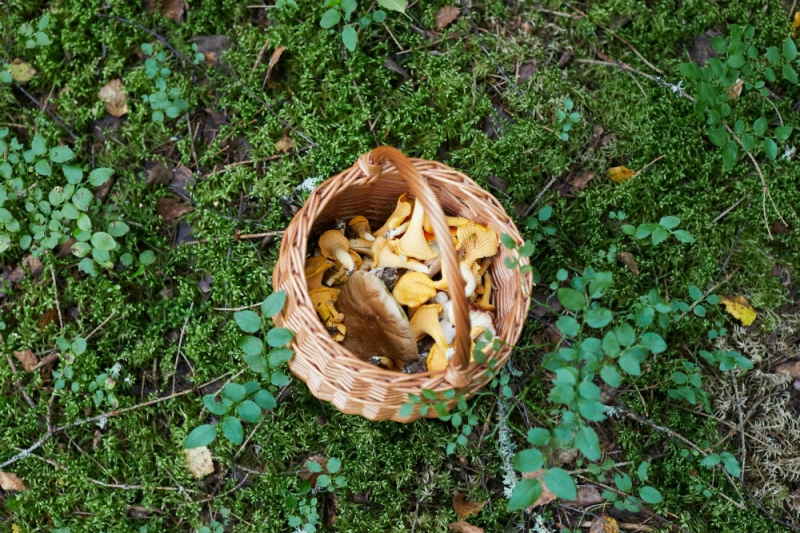
The gifts of the forest are exactly what the Mari Republic is famous for. Of course, you can take the path of least resistance by buying mushrooms and berries from local residents at the market. But it’s much more interesting to go collect them yourself! During the season, that is, in summer and early autumn, there are so many mushrooms and berries in Mari El that you don’t even need to know the places – glades can easily be found next to holiday villages and tourist centers. However, “mushroom maps” compiled by local residents are posted on the Internet.
Mushrooms here include porcini, boletus, aspen, chanterelles, saffron milk caps, milk mushrooms, russula, and morels. In spring, boletus grows in the forests, and after rainy days, champignons appear in the meadows. By the way, local residents like to dry mushrooms for the winter – you can buy such a semi-finished product and cook aromatic mushroom soup all winter. Mari berries are blueberries, blueberries, cranberries, stoneberries, lingonberries, strawberries, and raspberries. However, when going on a “silent hunt”, be sure to take repellent with you: forest mosquitoes do not spare anyone.
Spend the night in a haunted castle
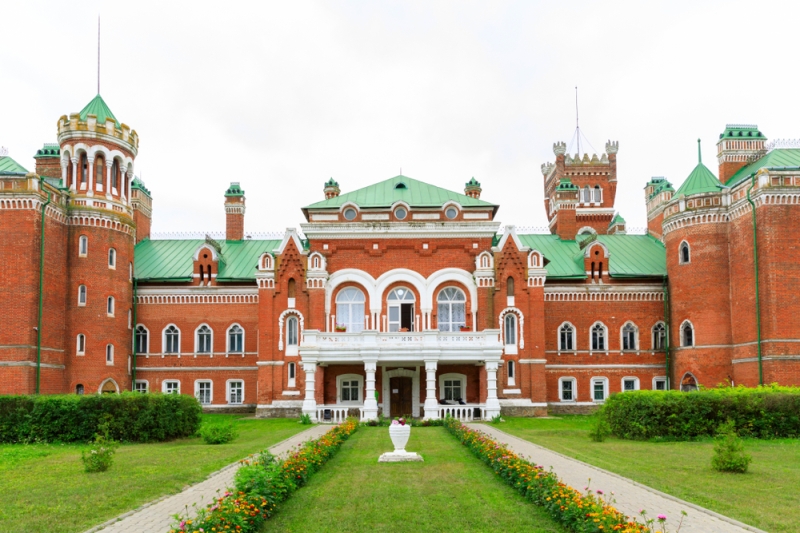
The villages of the republic are sometimes truly capable of surprising. In the village of Yurino, on the banks of the Volga River, there is a real castle: in 1860 it began to be built for the family of Count Sheremetev’s grandnephew in the late neo-Gothic style. The main author of the project was the Russian architect Parland A.A., who studied in Germany for several years, so the building is amazing and unusual for Russia: with turrets and lancet windows. Construction was completed only in 1914, so the noble gentlemen did not really have time to live in this beautiful building.
In the Soviet years, the castle was a sanatorium, a rest home and a military hospital; it stood abandoned for a long time: local enthusiasts tried their best to maintain its condition on their own, but there was not enough funding. Fortunately, restoration began in the 2000s: today many halls have been restored, and about 20 thousand tourists come to the castle every year.
The Sheremetev castle also has its own legends: for example, they say that the ghost of a peasant girl lives in it, who rudely refused intimacy to the master when he wanted to exercise the “right of the first night.” In anger, Sheremetev walled up the rebellious beauty in the basement. Since then, the ghost has been wandering around the castle and crying at night: in the corridor you can meet her shadow, and if you peer for a long time into the ancient mirror at the main staircase, Palashka (that was the name of the peasant woman) will appear in the reflection. By the way, during reconstruction, human remains were actually discovered in the basement.
You can check whether this is true or a fiction to attract tourists by staying in the castle for the night: there are a total of 56 rooms in the building, and some of them have now been converted into hotel rooms. The “suites” are located in the former library and smoking room, and the “economy” ones are in the servants’ rooms. You can also take a night tour of the castle – with candles.
There is a minibus from Yoshkar-Ola to Yurino, the journey takes about three hours.
Visit the town of Ostap Bender
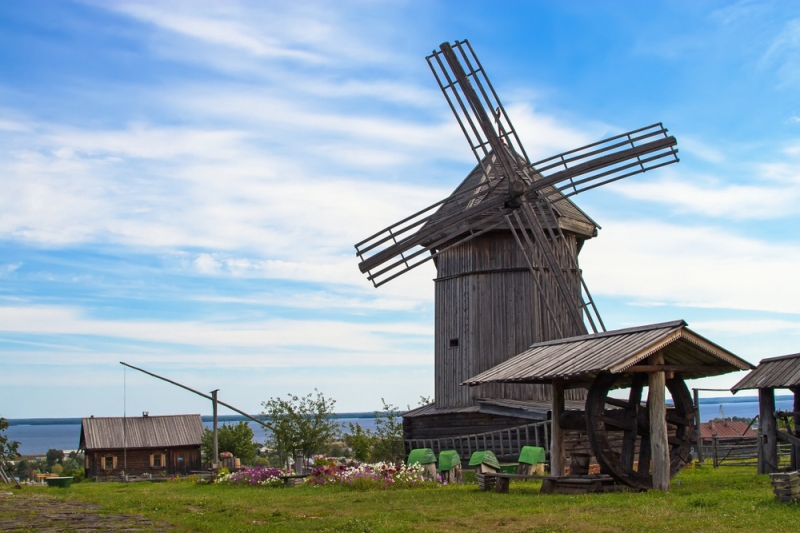
Another interesting location on the Volga is the town of Kozmodemyansk: it is believed that it was the prototype of the city of Vasyuki from the novel “The Twelve Chairs” by Ilf and Petrov. At least all local residents are sure of this. Although the right to be called Vasyuki is also disputed by the village of Vasilsursk in the Nizhny Novgorod region, which in itself is much less interesting.
Largely thanks to Ilf and Petrov, Kozmodemyansk has always been perhaps the most tourist city in the republic – travelers came here long before Yoshkar-Ola was “gentrified.” At first glance, it looks like a village, although very well-kept and ready to receive guests at any moment: green streets, elegant churches, low houses with carved shutters.
There are several truly interesting museums in the city. The Alexander Grigoriev Museum of Art and History is called the Small Tretyakov Gallery for its rich (especially for a provincial town!) collection: paintings by Aivazovsky, Korovin, Kandinsky, Levitan, Kramskoy, and Polenov are exhibited in the museum halls. The Museum of Merchant Life, located inside a beautiful sky-blue wooden mansion, painstakingly recreates the atmosphere of a bygone era and tells about what the inhabitants of Kozmodemyansk did in past centuries (by the way, all the furniture and household items are original). The youngest museum in the city is the Ostap Bender Museum of Satire and Humor. It is dedicated, of course, to the work of the writers who glorified Kozmodemyansk.
The large-scale open-air Ethnographic Museum deserves special attention. In fact, this is a small village in which the life, economy and culture of the mountain Mari have been recreated. The buildings of the village (residential buildings, a mill, a forge, a bathhouse, barns) were moved here in 1983 from the flood zone of the Cheboksary Reservoir. By the way, in this museum you can behave as you want: touch the exhibits with your hands, climb on logs, swing on a swing. Just like in an ordinary village, in a word.
You can get to Kozmodemyansk from Yoshkar-Ola by regular bus or with a one-day excursion tour.
Admire the Volga
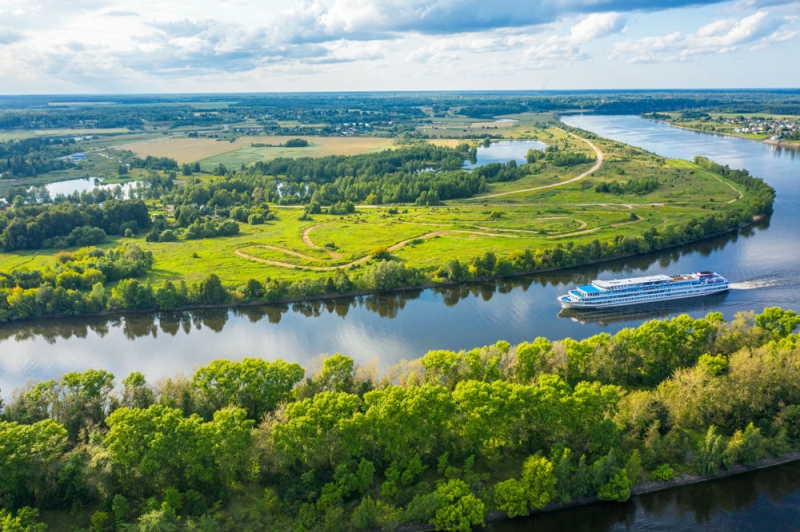
The Volga partially flows through the territory of the Mari El Republic, which means a visit to this region is a chance to see the great Russian river with your own eyes. You can sail along the Volga by boat – for example, capturing Kazan, Cheboksary or Nizhny Novgorod along the way. Or go on a one-day river trip on a boat or small boat – from Kozmodemyansk, Volzhsk or Yurino. In a particularly hot season, of course, it’s good to come to the banks of the Volga for the whole day – swim and admire the surroundings.
An impressive view of the Volga opens from several natural “viewing platforms” of Maristan: for example, from Cape Bird’s Flight, where the Ilet River flows into the Volga, or from Sovereign Mountain. Both locations are located near the border with the Chuvash Republic.
Take a tour of colorful villages
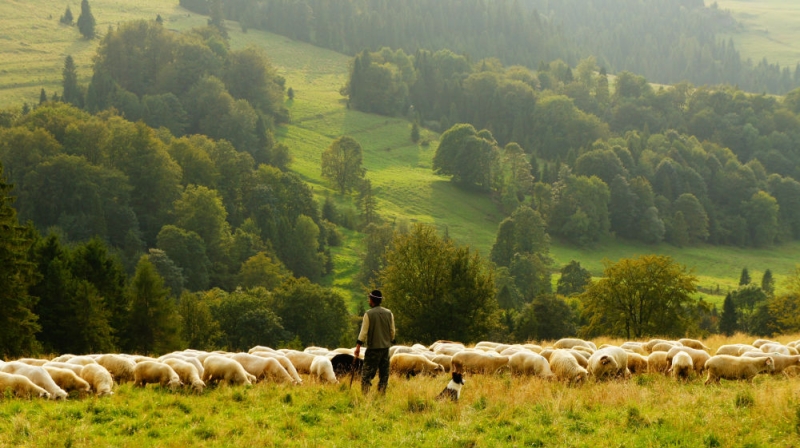
Villages in which time seems to have stopped in the last century are perhaps the most interesting thing in Mari El. Of course, the ideal vacation scenario is to drive a car through the most colorful settlements that you can find on Google maps, stay with the locals – sleep on the stove, drink fresh milk and go to the bathhouse, listen to legends imbued with mystical details, witness rituals that have remained since time immemorial.
Those who get to attend a Mari wedding will be especially lucky. This event is very colorful: all guests must come in traditional outfits – with ornamental embroidery, a monisto, a red sash or a waist towel. You’ll be lucky if someone brings a wooden flooring: then the Mari will cheerfully dance “Mari stompers.” On the third Saturday of June in Mari El they celebrate Peledysh Pairem – “Flower Festival”. This is a legacy of Soviet times: the celebration was created to replace traditional Mari celebrations, but in the end it took root – the carnival and impromptu performances are still held throughout the republic.
If you want real rural hardcore, ask to go with the shepherds to tend the flock. It’s almost a whole day’s activity, you’ll have to get up at 5 am, but you’ll be guaranteed vivid impressions, an even tan and memories of the endless Mari meadows.
Today, many villages of the Mari Republic are famous among tourists. For example, in the tiny village of Vizimbir residents have been welcoming guests for a long time – this place is called “Mari Switzerland” because of the impressive views, dense tall forests and miniature houses in the surrounding greenery canvas. For many residents of Vizimbir, their native language is Mari, and they mainly communicate with each other in it. They try to preserve their traditions: they wear national clothes, cook in the oven, heat the bathhouse, and all this can be shared with any visitor.
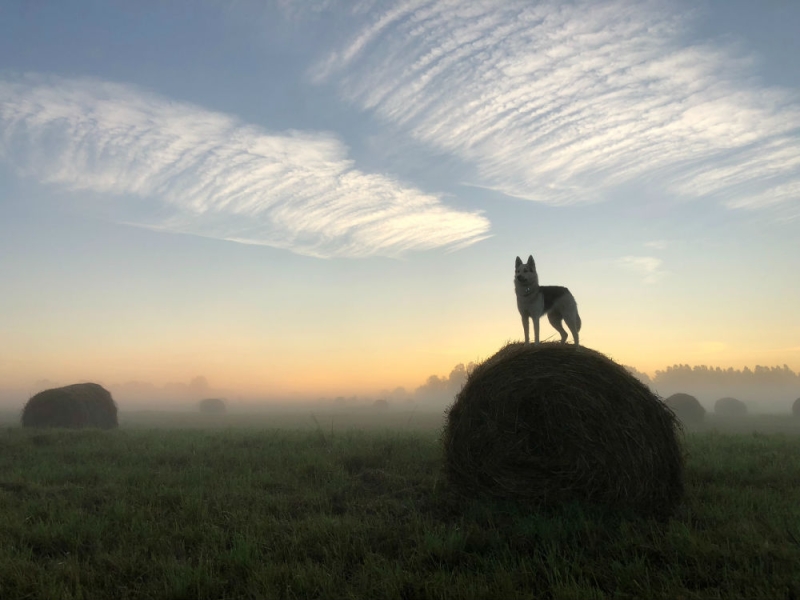
In the village AlyoshkinoThe Museum of Life of the Indigenous Mari was opened. It will be interesting to visit it: few people in Russia know about this nationality. For some reason, it is common to think that the Mari are almost Tatars, always black-haired and with slanted eyes, while the ethnic inhabitants of the republic are Finno-Ugrians, that is, they are much closer to the Finns, Estonians, Karelians, Hungarians. By the way, there, on the banks of the Arda River, there is a good tourist complex “Razdolie”, decorated with a Mari flavor, with a farm, rustic cuisine and a sauna.
In the village of Sernur (it is known mainly because the poet Nikolai Zabolotsky lived here as a child) there is a cheese factory quite famous in the republic. Several years ago, the company underwent a rebranding, after which, in addition to ordinary “Russian” cheese, they began to produce “foreign” varieties: Camembert, Gruyère, ricotta, halumis, mozzarella, burrata, feta cheese, and not only from cow, but also from sheep and goat milk. Sernur cheeses are almost as good in taste as “sanctioned” cheeses, winning prizes at international competitions. There is a company store of the Sernur plant in Yoshkar-Ola, but it’s much more interesting to see the production with your own eyes.
Village Sardayal, in principle, has changed little since Soviet times: here today, few people have the Internet and satellite TV, you can’t see plastic double-glazed windows on the windows, almost all residents have vegetable gardens, chickens, cows and pigs. However, the residents of Sardayal always welcome guests and try to actively develop tourism in their village, because for many urban residents the village is a real exotic, and for some – warm memories of trips to their grandmother for the summer. A couple of years ago, the “Circle” festival was held in Sardayal for the first time – with a rave in the fields, a concert in the school gym, dinner by the fire and a transfer by truck. Today, locals hold summer weekend camps, develop interesting routes around Sardayal and the surrounding area, and make lists like “Top things to do in Sardayal,” which includes items like “wake up in the hayfield to the sound of roosters crowing,” “walk the sheep and not lose them.” , “collect blue clay from the ravines” and “steam in the village bathhouse.”
In the Mari outback you can always support a local manufacturer and buy handicrafts: beautiful Mari embroidery – red or black patterns on white fabric with hidden pagan symbols, products made of birch bark, felt boots, paintings made of wool or products made of bog oak.
Meet the pagans
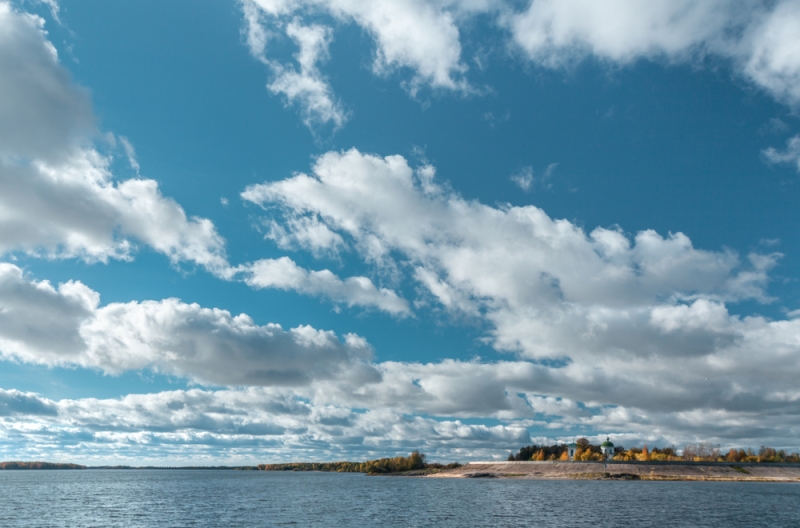
The Mari are not without reason called “the last pagans of Europe”: only here the people, having adopted Christianity, fully preserved their original faith and even integrated it into monotheism. For example, they say that in village churches sometimes carcasses of geese are found in front of the icon of St. George the Victorious: the Mari identify him with the deity of war and try to appease him. The Mari have their own Sacred Groves (kusoto), where they pray to the ancient deities led by the good Osh Poro Kugu Yumo, perform rituals and make symbolic sacrifices. It is possible for a stranger to attend collective prayers, although it is not so easy: you need to contact the press secretary of the pagan community and tell about yourself and your goals. However, it is worth remembering that the Mari pagans are very jealous of what will be published in the public space and almost never invite journalists. In any case, their rituals and traditions should be respected both during and after visiting the grove. Most of the surviving sacred groves are located in the northeastern and central regions of the Mari El Republic.
If you are not ready for such a close acquaintance with paganism, but still want to learn more about it, you can visit the ethnographic exhibition “Rites of the Life Cycle” in Yoshkar-Ola.
*Prices valid at time of publication
Text author: Margarita Paimakova
For hotel bookings around the world, use OneTwoTrip.

